
Where is the market headed?
It was a day of slight market weakness. The U.S. President has once again turned his focus to tariffs—this time targeting the pharmaceutical sector—causing most pharma stocks to decline. Meanwhile, the geopolitical conflict that seemed to be de-escalating last evening has intensified once again. Bombings have resumed, with the U.S. deploying additional warships to the region. Russia has also begun bombing Kyiv, signalling that the situation is far from resolution.
Market Overview
Nifty closed about 0.37% lower, settling around 24,853
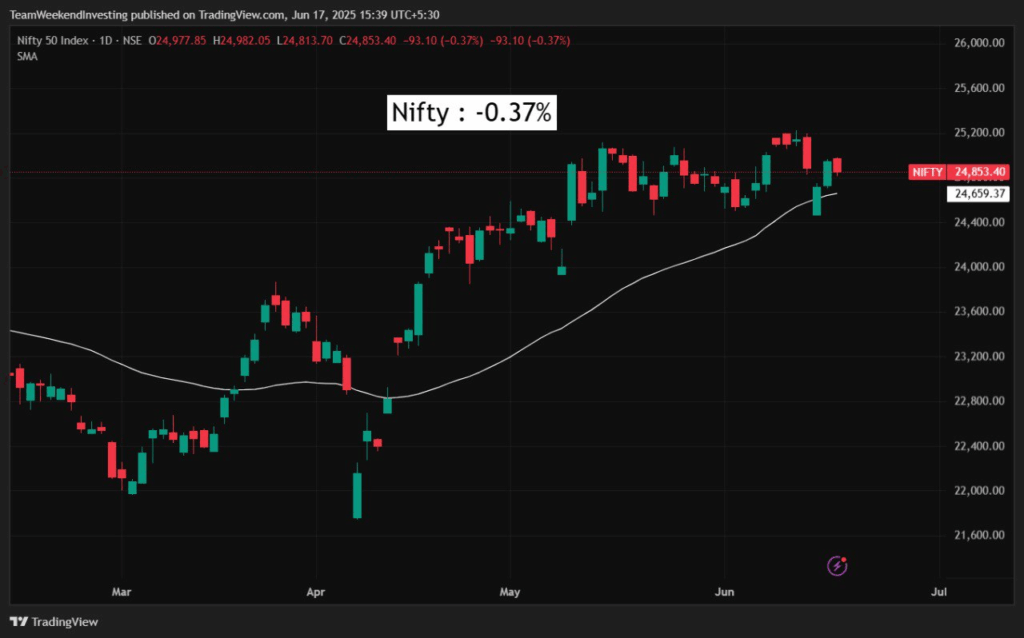
Nifty Next 50
Nifty Junior slipped by 0.71%
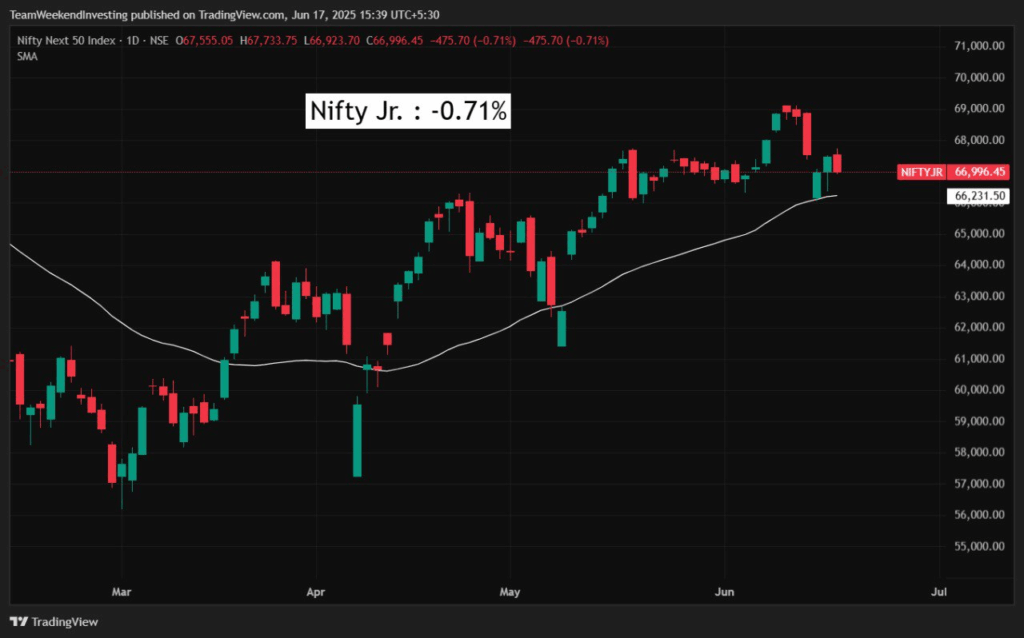
Nifty Mid and Small Cap
Mid caps declined by 0.62%, giving up the gains made yesterday.
Small caps also fell by 0.69%, mirroring the same pattern of losing recent momentum.
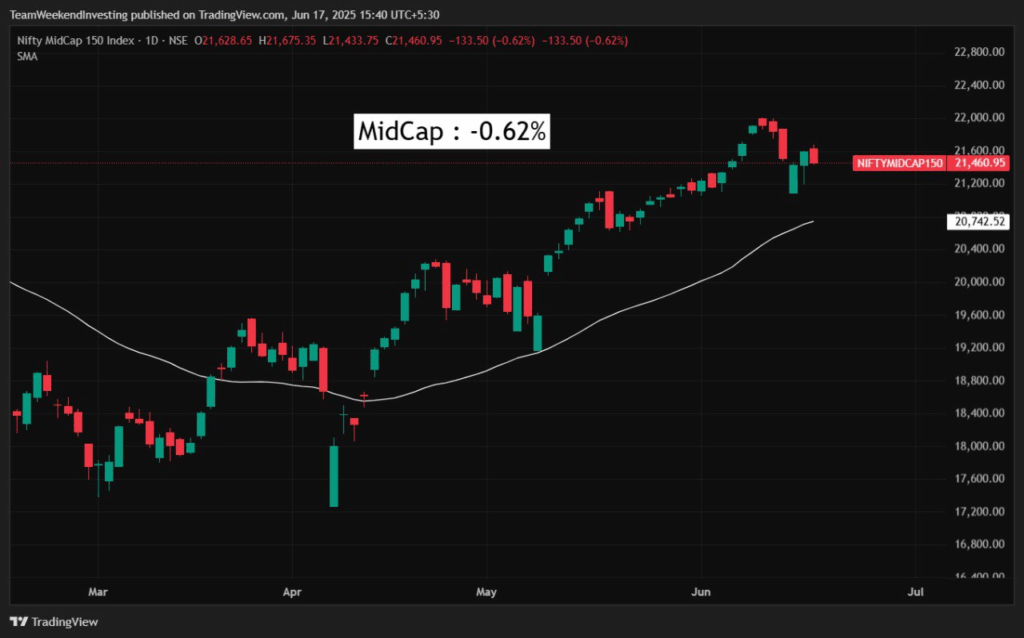
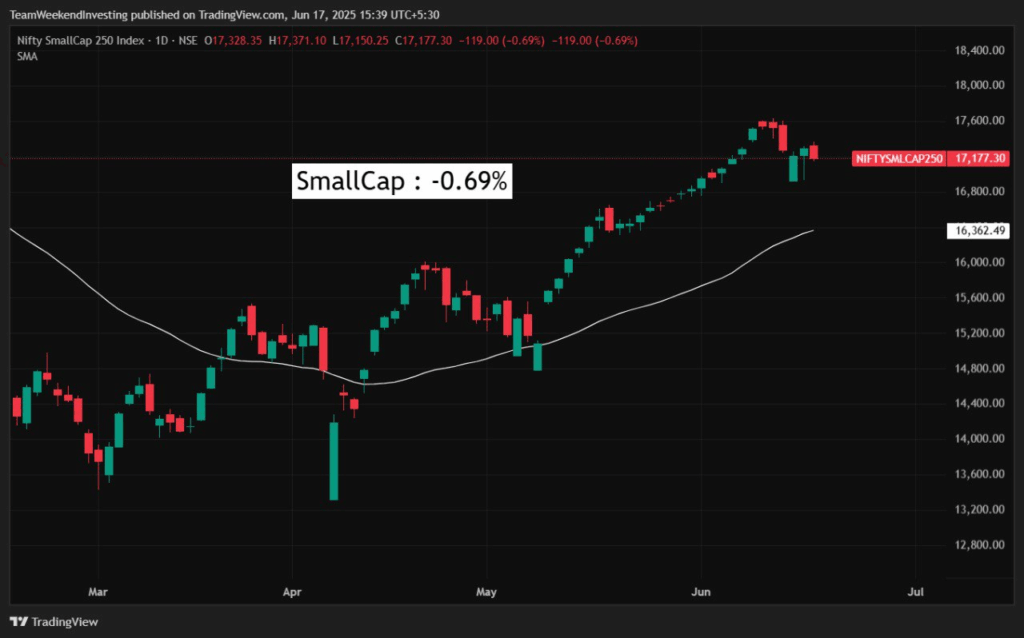
Bank Nifty
Nifty Bank was also down by 0.41%, adding to the overall weakness across market segments.
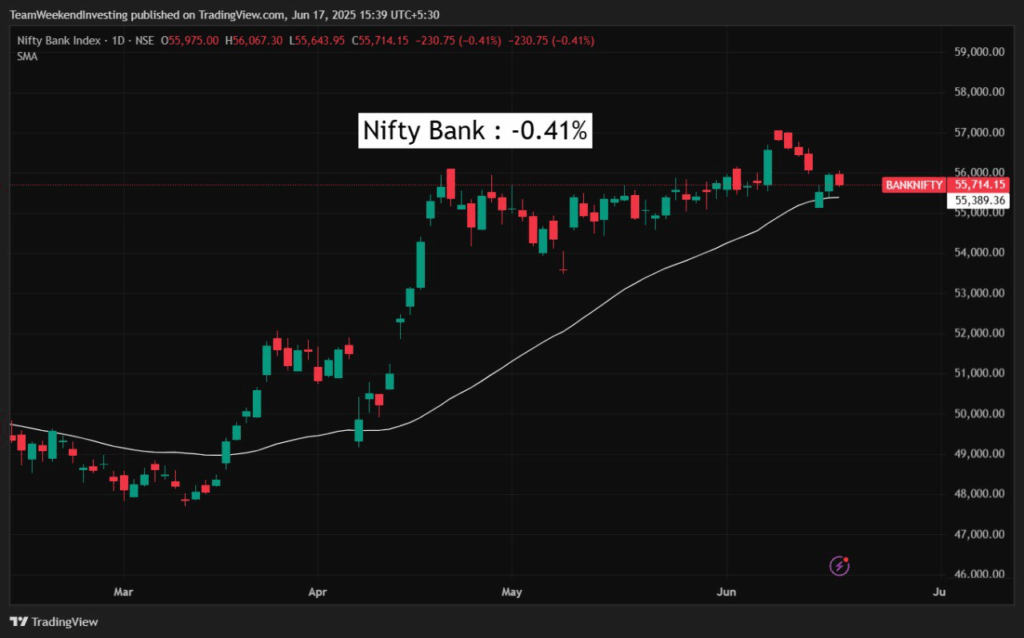
GOLD
Gold rose 0.66% to reach ₹9953 per gram, once again approaching its record highs
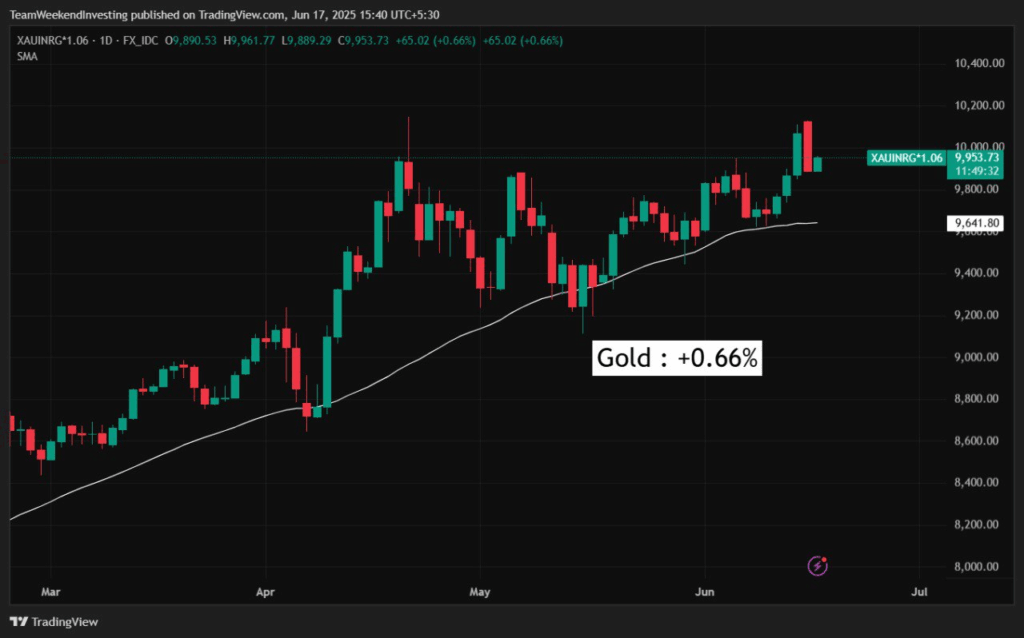
Advance Decline Ratio
Declines intensified steadily throughout the day. The session opened with a mild dip, but losses continued to mount—an unfavourable sign. This was in sharp contrast to the previous day’s trend. Market breadth reflected the weakness, with only 138 advances against 362 declines.
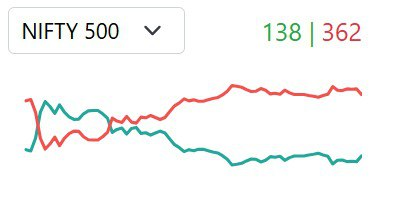
Heat Maps
The heat map reflected a mild red across most sectors, with IT, banking, and FMCG largely spared. Frontline stocks recorded 0–2% declines, while the
Nifty Next 50 space showed deeper red. Stocks like Jindal Steel, Divi’s Lab, IRFC, Lodha, Canara Bank, and DLF, which had rallied previously, gave up gains. On the positive side, CG Power, Siemens, Pidilite, and LTIM held firm.
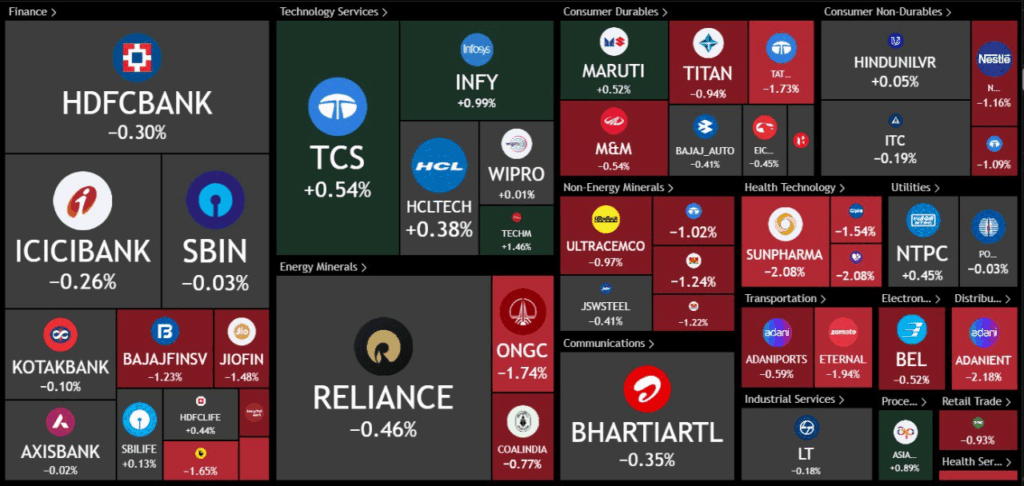
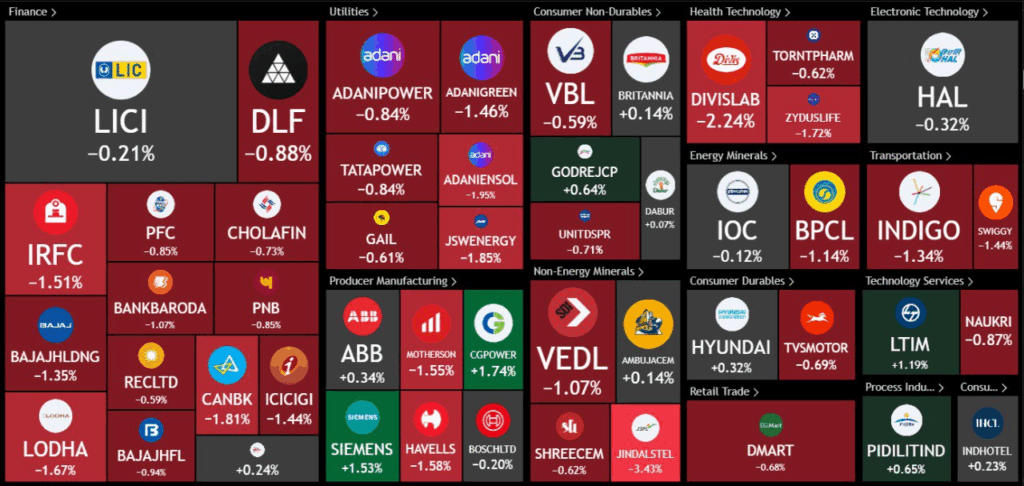
Sectoral Overview
Pharma saw a sharp 1.9% drop following tariff concerns raised by the US President, disrupting a rally that had been building over the past couple of days. Metals also declined significantly, down 1.43%, while other sectors posted mild losses of around 0.2% to 0.75%. Nifty IT bucked the trend with a 0.72% gain, and the defence sector remained resilient, up 0.38%, reflecting the current geopolitical tensions.
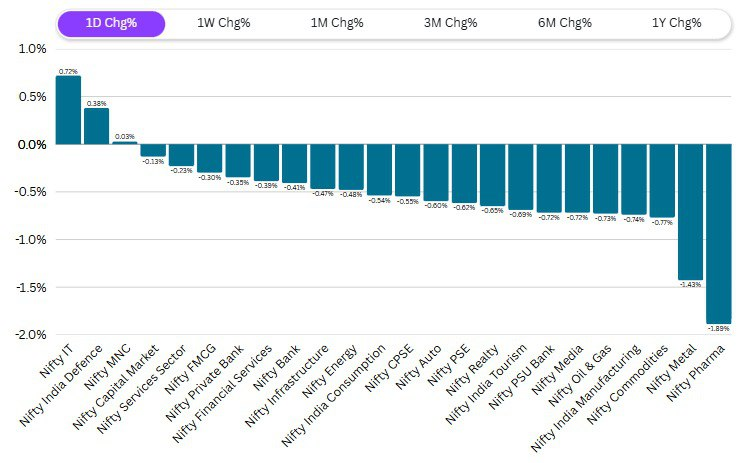
Sector of the Day
Nifty Pharma Index
The pharma sector faced sharp declines, with stocks like Aurobindo Pharma, Lupin, Granules, Natco, and Laurus losing nearly 3–4% each. The pharma index, which was on the verge of a breakout—and had briefly broken out—failed to sustain those levels. Over the past three sessions, further losses have continued to weigh on the sector.
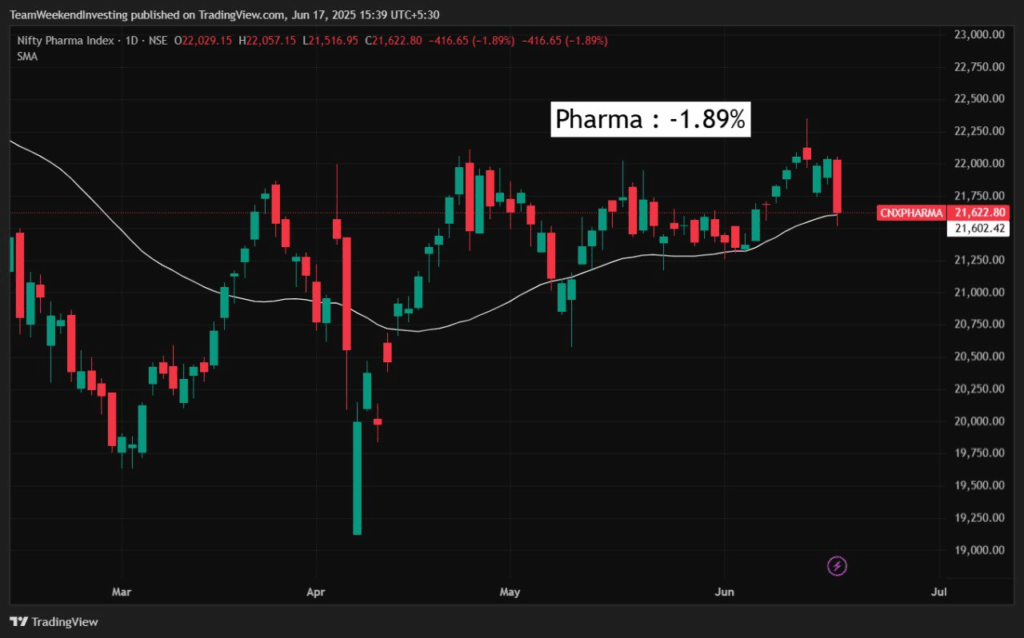
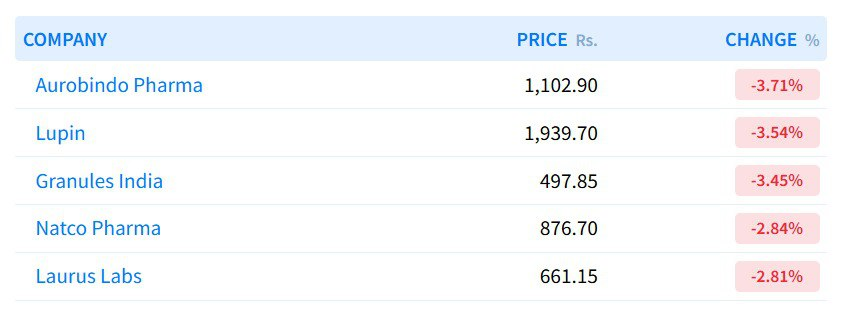
Story of the Day: Are We Headed for Plaza Accord 2.0?
The original Plaza Accord of 1985 was a historic agreement where the United States, facing rising deficits and an overvalued dollar, collaborated with Japan, Germany, the UK, and France to devalue the dollar. This coordinated central bank intervention led to a nearly 50% decline in the US Dollar Index over three years, boosting exports, lifting equities, and igniting a major rally in commodities and emerging markets.
Today, global financial dynamics are beginning to echo the conditions that led to the Plaza Accord. Over the last 40 years, global capital has disproportionately flowed into equities, not commodities. The convenience of financialisation, near-zero transaction costs, and digital access have left commodities as the neglected asset class. But recent data suggests a potential reversal.
A chart from Crescat Capital shows the commodities-to-equities ratio at a 40–50 year low.
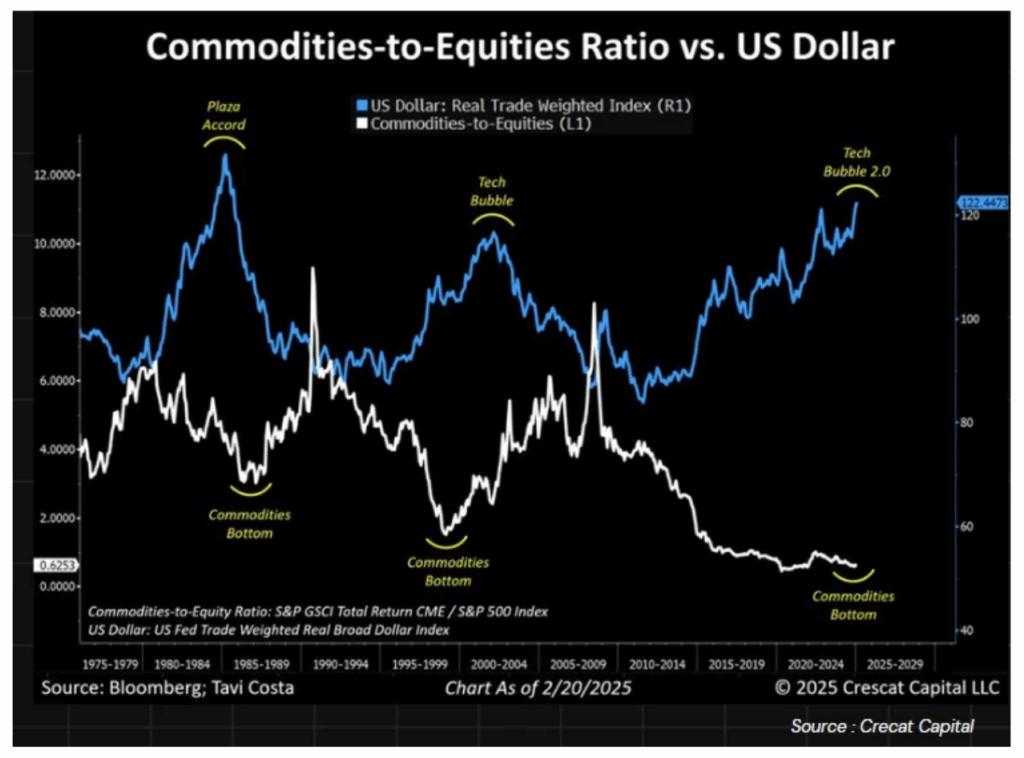
Historically, whenever commodities have reached these lows, they’ve gone on to lead the next major uptrend. The US Dollar Index has seen similar cyclical peaks — post-Plaza Accord, during the dot-com boom, and now, amid the tech-driven surge led by the ‘Magnificent Seven’.
Commodities have already shown signs of revival — up 17% this year alone — against a backdrop of escalating geopolitical tensions, rising inflation in the West, and persistently high interest rates. Central banks, too, have been accumulating gold at record levels, hinting at growing concerns about the global monetary system.
However, unlike in 1985, the likelihood of a coordinated Plaza Accord-style intervention today is low. Global alliances are fragmented, and geopolitical cooperation is increasingly fraught. Any de-dollarisation effort would likely be unilateral or forced, not a cohesive agreement.
Still, the impact of a potential US dollar devaluation — whether strategic or market-driven — could be significant. Historically, such shifts have led to capital flowing from dollar-denominated assets into real assets like commodities and emerging markets. After the original Plaza Accord, gold rose 80%, and the S&P 500 surged despite the 1987 crash.
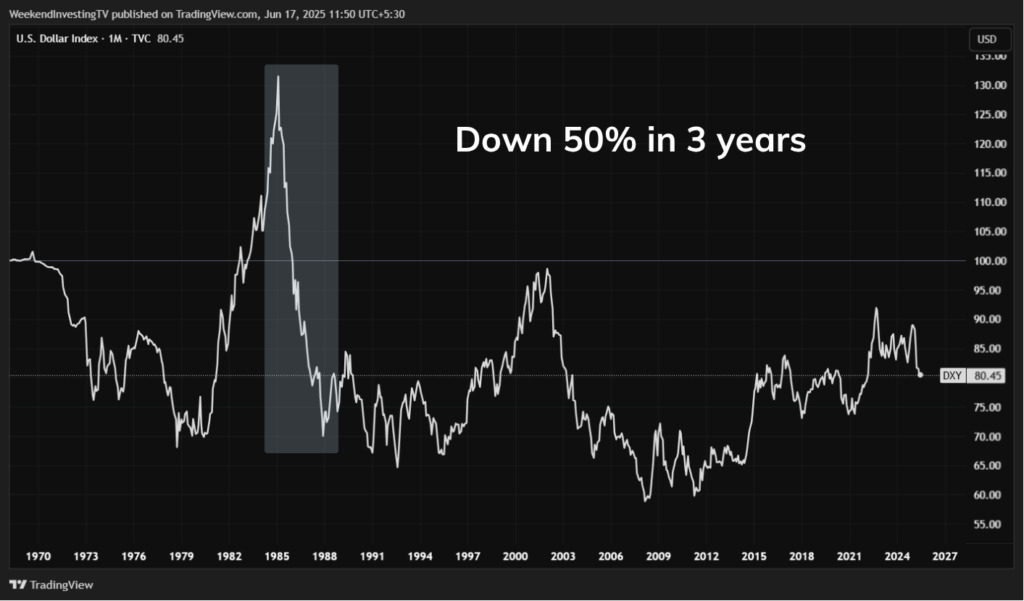
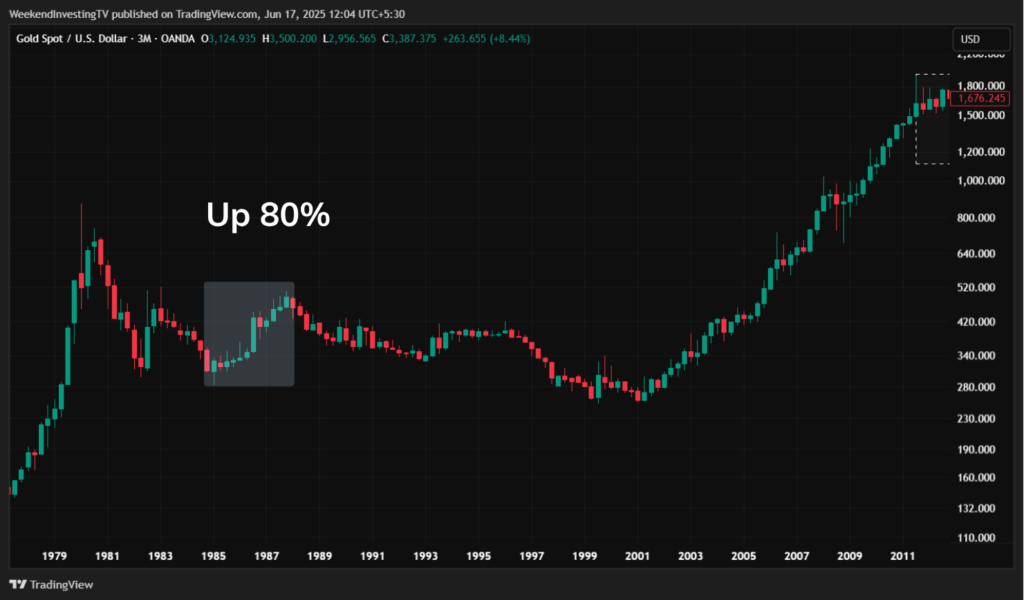
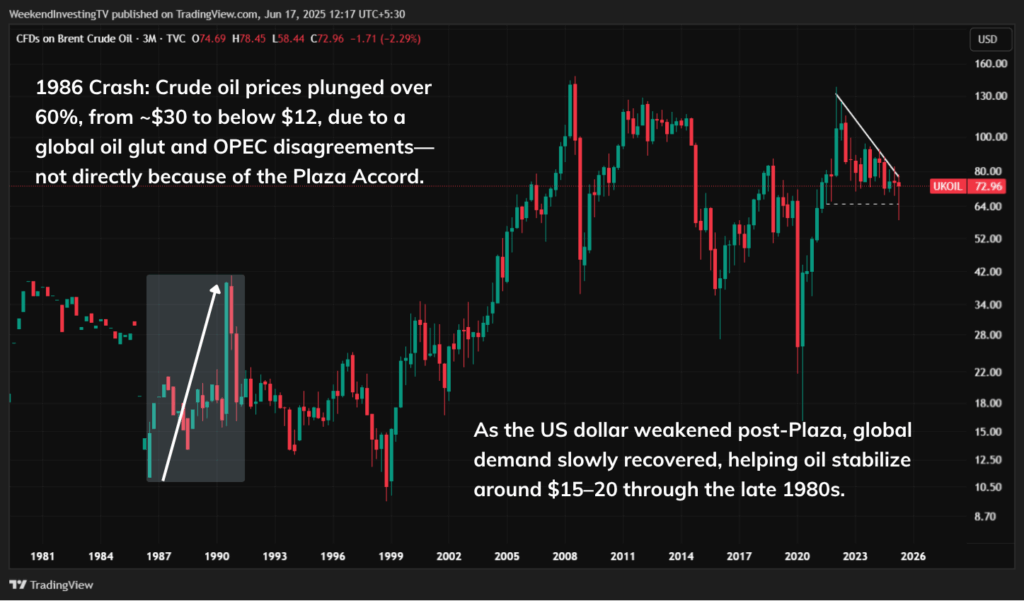
Oil initially dropped due to a glut but later stabilised at higher levels as global demand recovered.
The current suppression of commodities is historically anomalous. Oil, for instance, is priced today roughly the same as it was 20 years ago (see the image below) , despite global GDP and money supply having expanded dramatically.
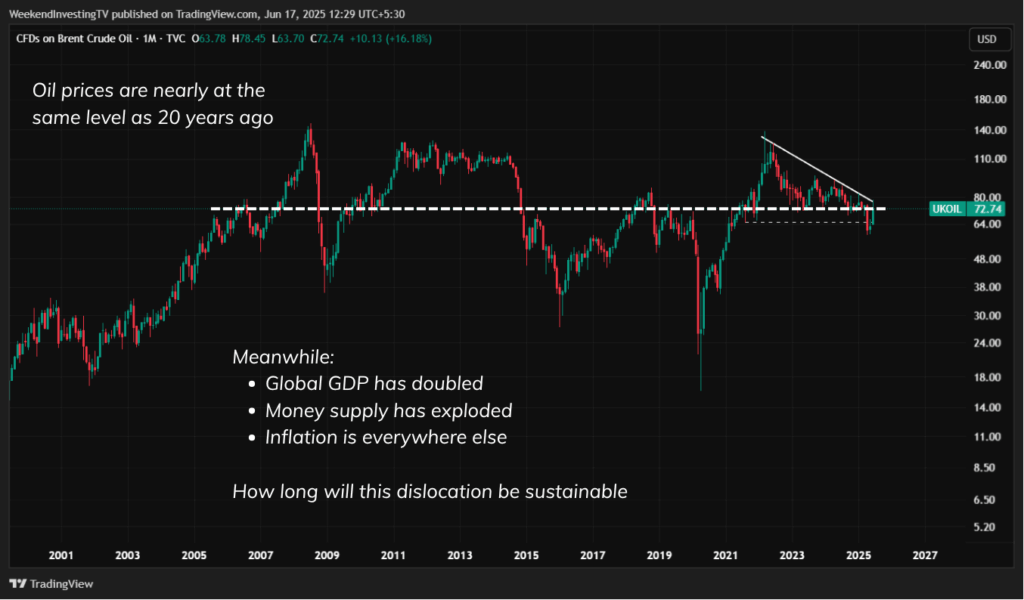
This suggests that a long-overdue commodities reversion may be underway.
Looking ahead, several outcomes are possible:
- Commodities could rise sharply, while equities move slower.
- Equities might stagnate or correct, while commodities gain.
- A broad rotation from financial to real assets could unfold over 6–8 years — the average length of past commodity supercycles.
Given these macro trends, strategic asset allocation becomes critical. Exposure to real assets — whether directly through commodities, via ETFs, or through commodity-oriented equities — could help portfolios capture the next leg of growth. Gold and other precious metals may serve as effective hedges, especially as inflation and geopolitical risks remain elevated.
While timing such macro shifts is difficult, being diversified across both financial and real assets provides a robust framework. As the potential for a Plaza Accord 2.0 looms — whether overt or covert — market participants would do well to monitor the global dollar dynamic closely.






